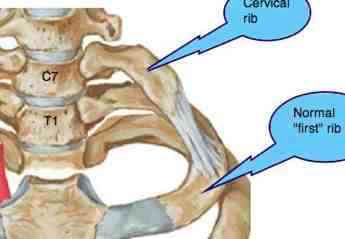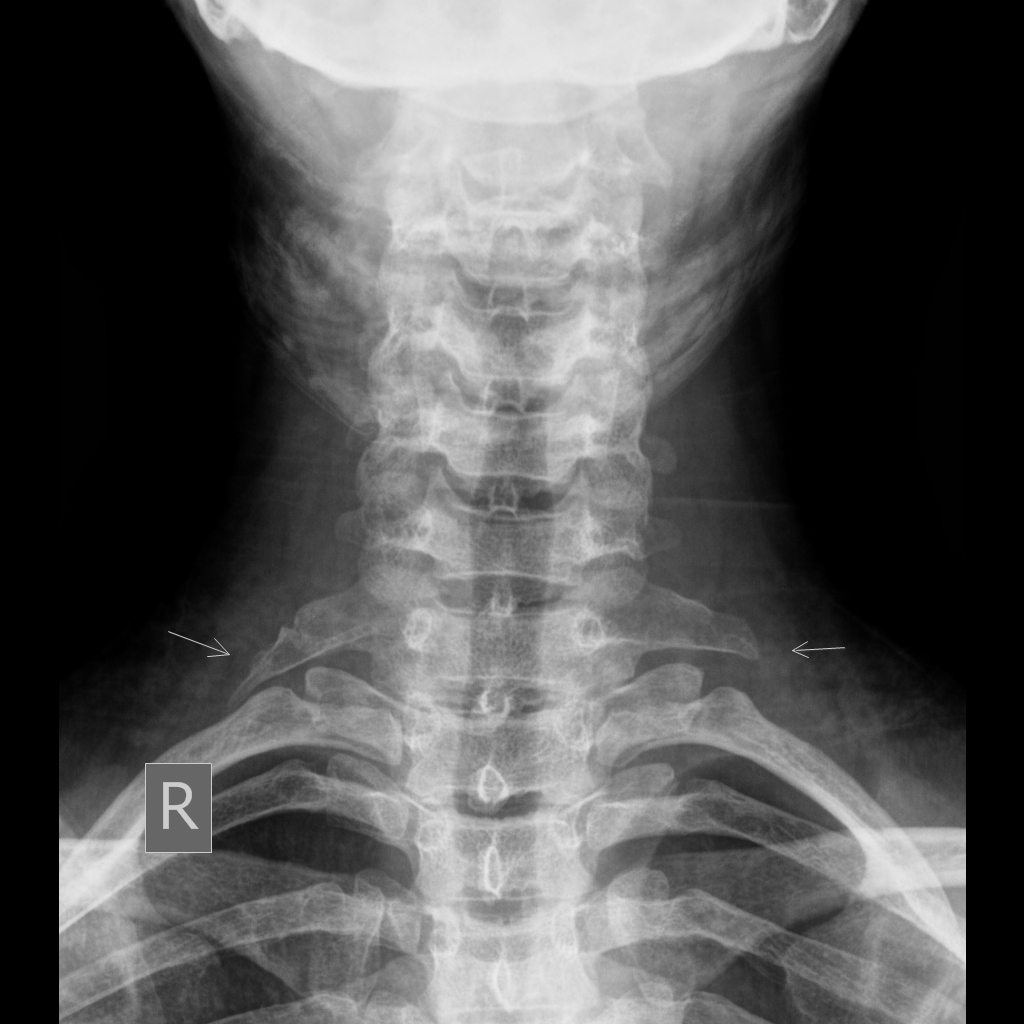Difference between revisions of "COSTAL ELEMENTS-CERVICAL RIB"
(Imported from text file) |
|||
| Line 11: | Line 11: | ||
<br/> | <br/> | ||
<br/>[[Image:paste-3856880632047.jpg]] | <br/>[[Image:paste-3856880632047.jpg]] | ||
<br/><b>Image:</b> [https://commons.wikimedia.org/wiki/File:Halsrippe.JPG Hellerhoff], [https://creativecommons.org/licenses/by-sa/3.0 CC BY-SA 3.0], via Wikimedia Commons [Accessed 7 Apr. 2019]. | <br/><b>Image:</b> [https://commons.wikimedia.org/wiki/File:Halsrippe.JPG Hellerhoff], [https://creativecommons.org/licenses/by-sa/3.0 CC BY-SA 3.0], via Wikimedia Commons [Accessed 7 Apr. 2019]. | ||
<br/> | <br/> | ||
Latest revision as of 12:32, 27 March 2023
SUMMARY
1. Due to elongation of the costal element of C7.
2. Extends from C7 to the first rib.
3. Usually appears at the age of puberty due to elongation of the neck and drooping of the shoulders.
4. Less symptomatic with a well ossified rib than with a fibrous band.
5. When cervical ribs are well ossified, the brachial plexus is likely to be pre-fixed (roots arising from C4, C5, C6, C7, C8).

Image: Hellerhoff, CC BY-SA 3.0, via Wikimedia Commons [Accessed 7 Apr. 2019].

Image: Case courtesy of Mohammad Osama Hussein Yonso, Radiopaedia.org. From the case rID: 17212.
Reference(s)
R.M.H McMinn (1998). Last’s anatomy: regional and applied. Edinburgh: Churchill Livingstone. Get it on Amazon.
Drake, Richard L., et al. Gray's Anatomy for Students. Elsevier, 2023. Get it on Amazon.